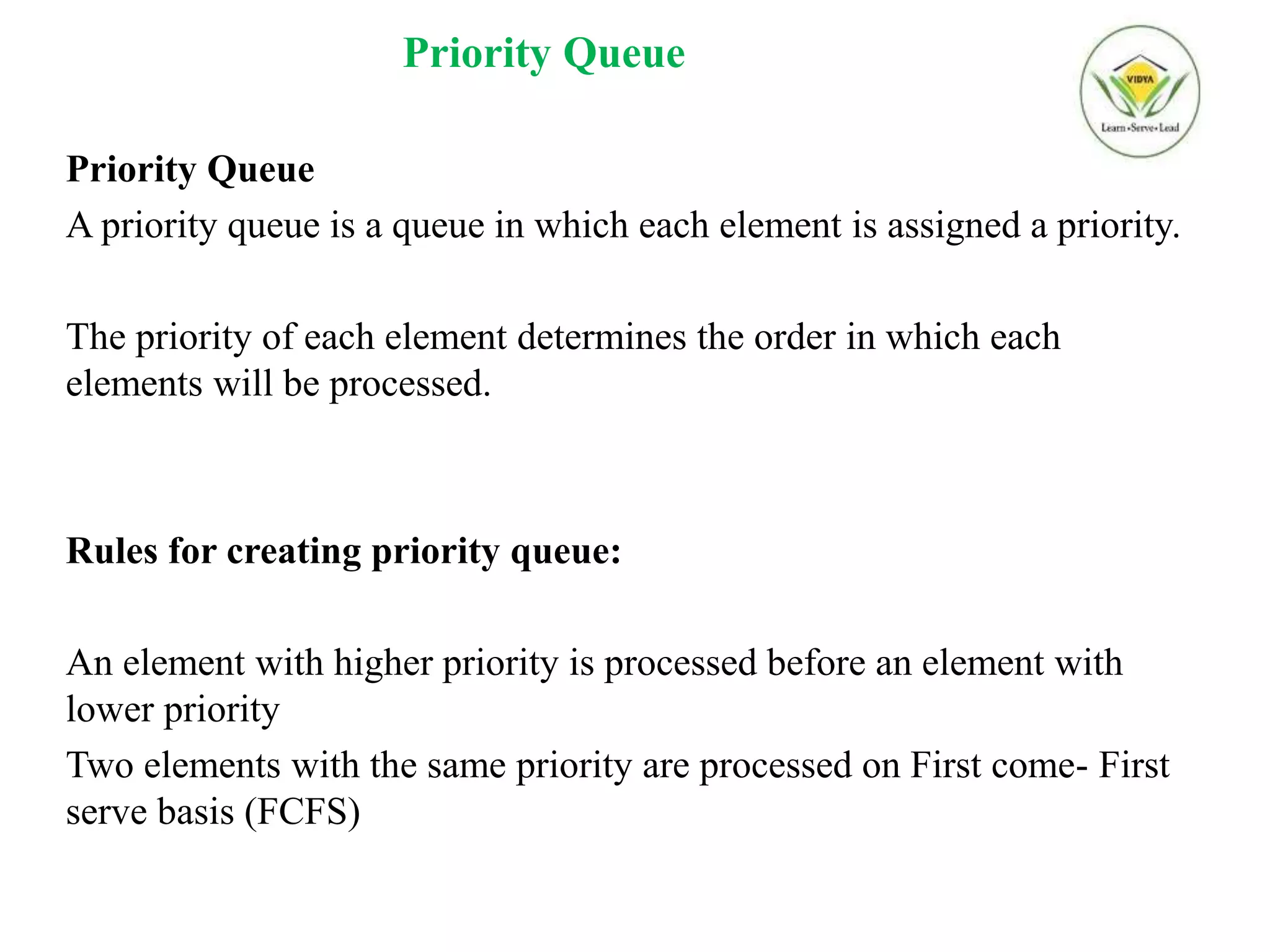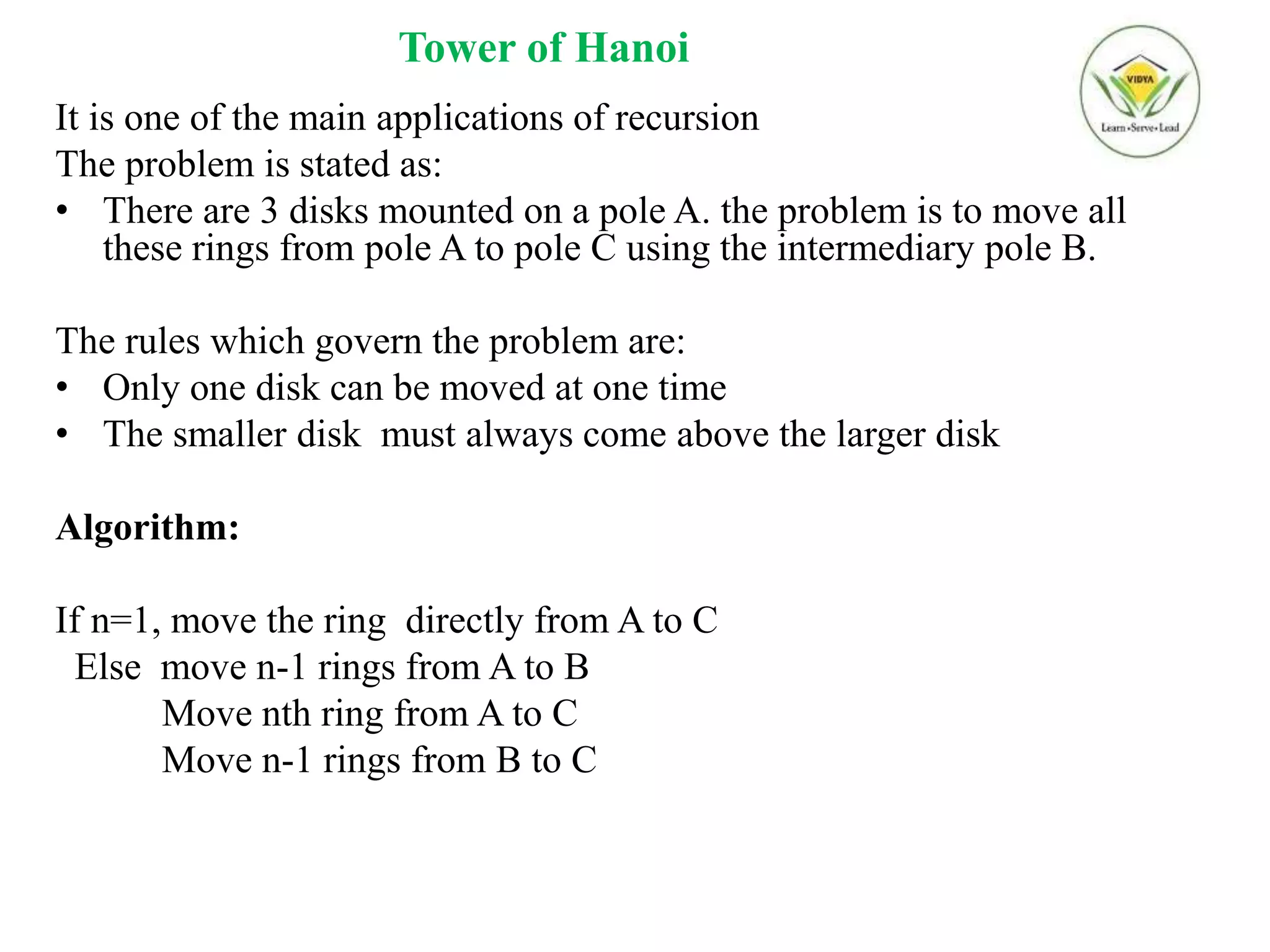The document discusses various data structures including stack, queue, linked lists, priority queue, and the tower of Hanoi problem. It provides definitions and examples of each data structure. For stacks, it describes the push and pop operations. For queues, it discusses insertion at the rear and deletion from the front. It also provides algorithms and code examples for implementing each data structure using arrays and linked lists.
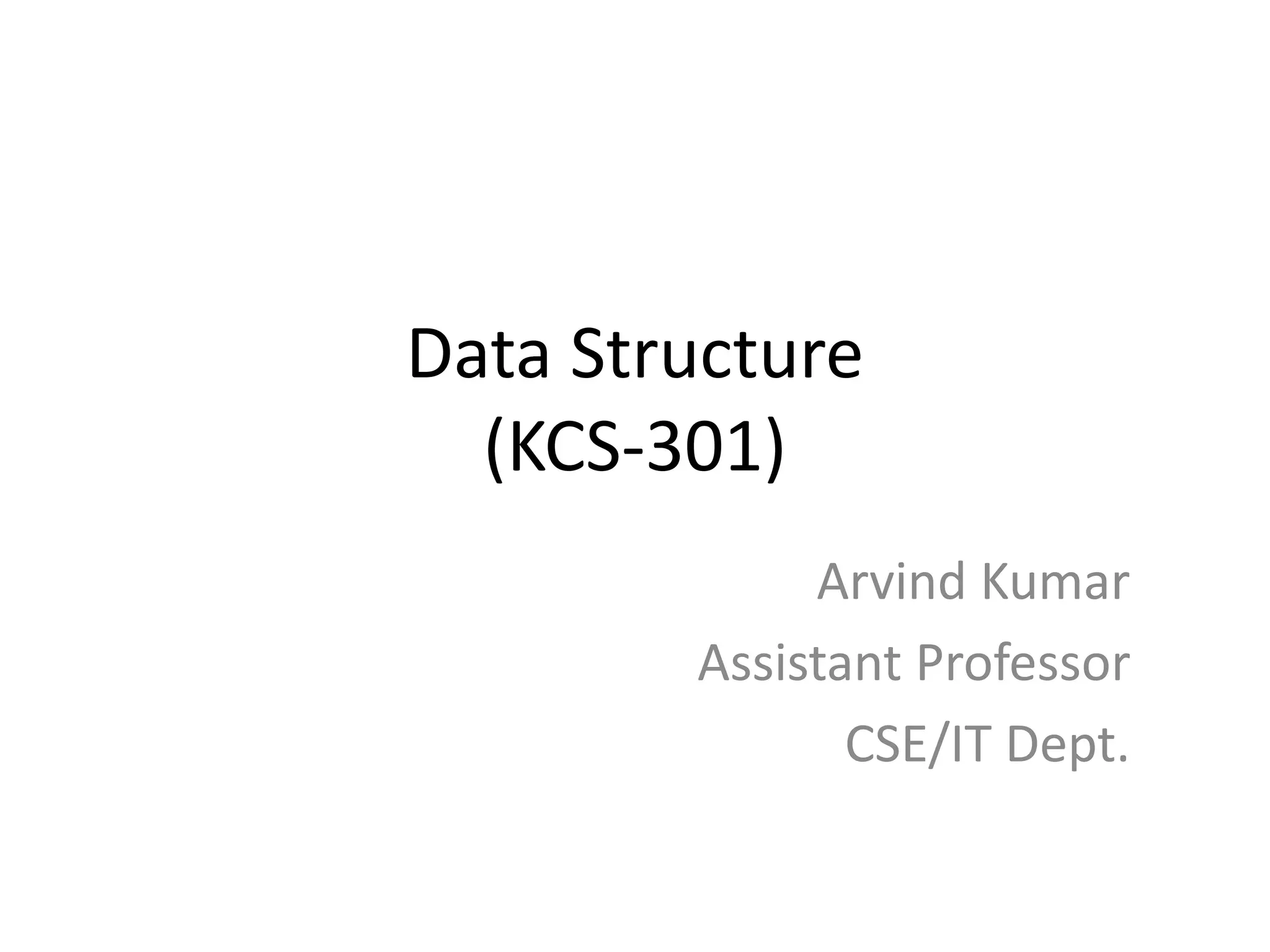
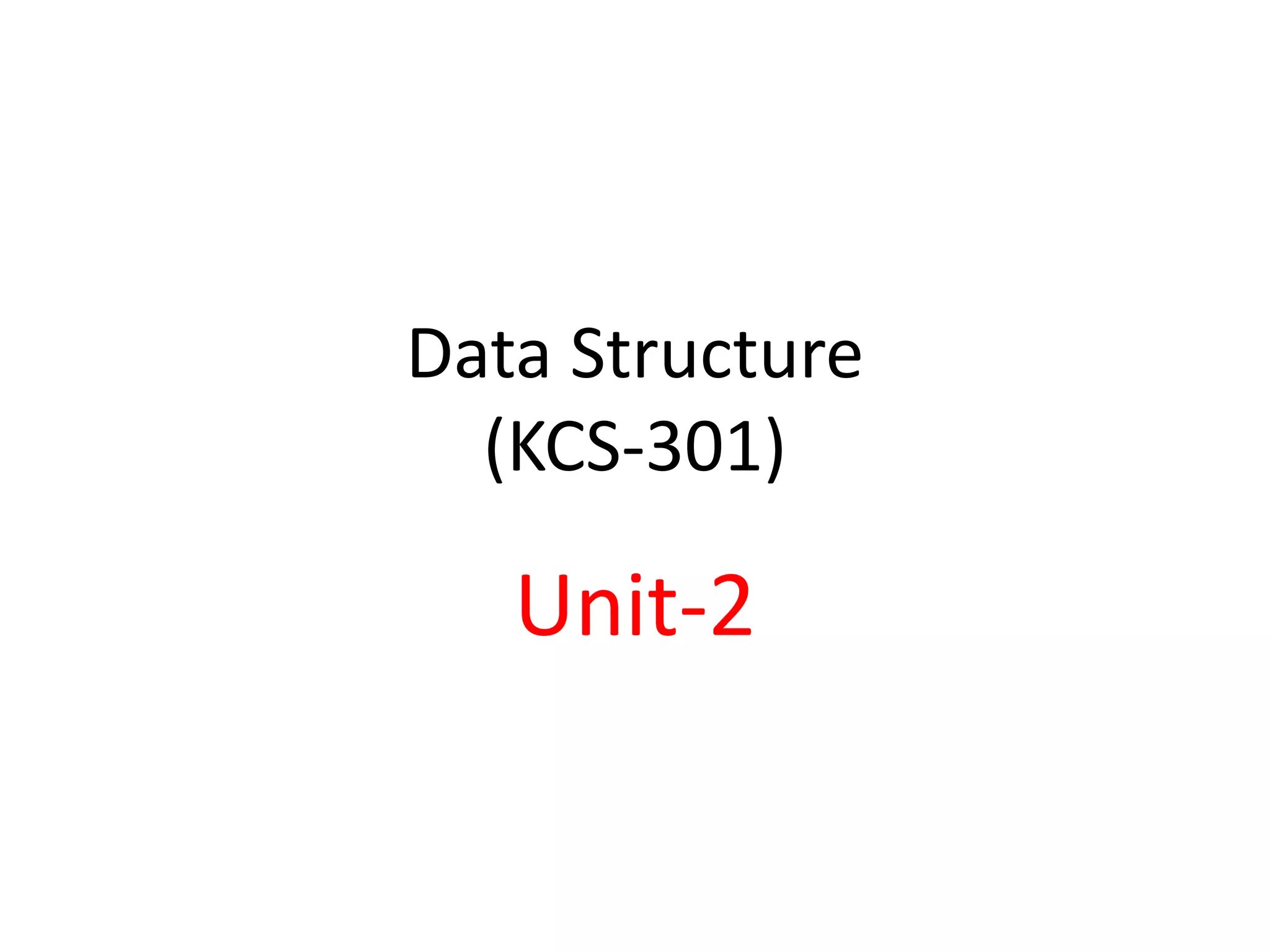
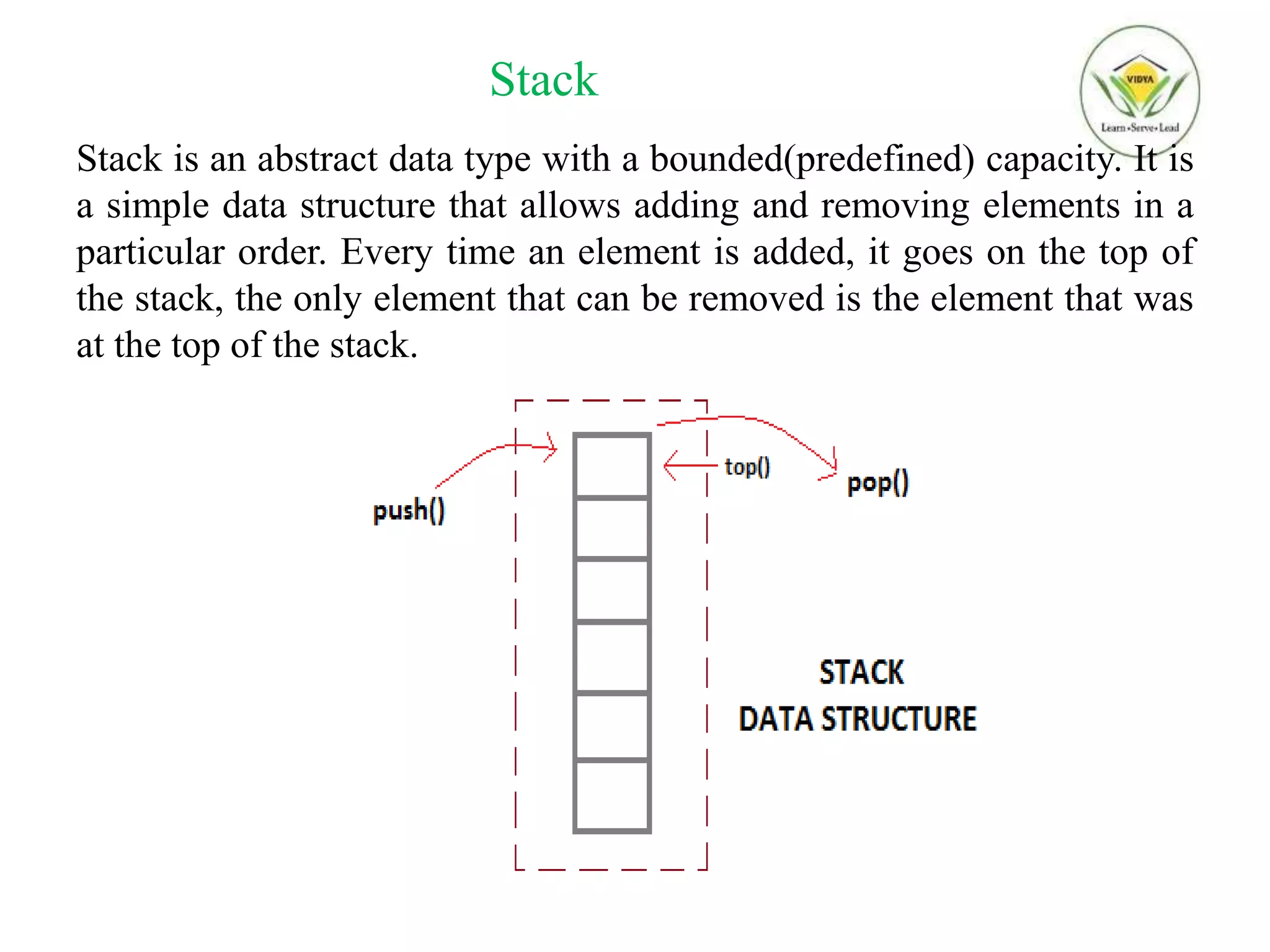
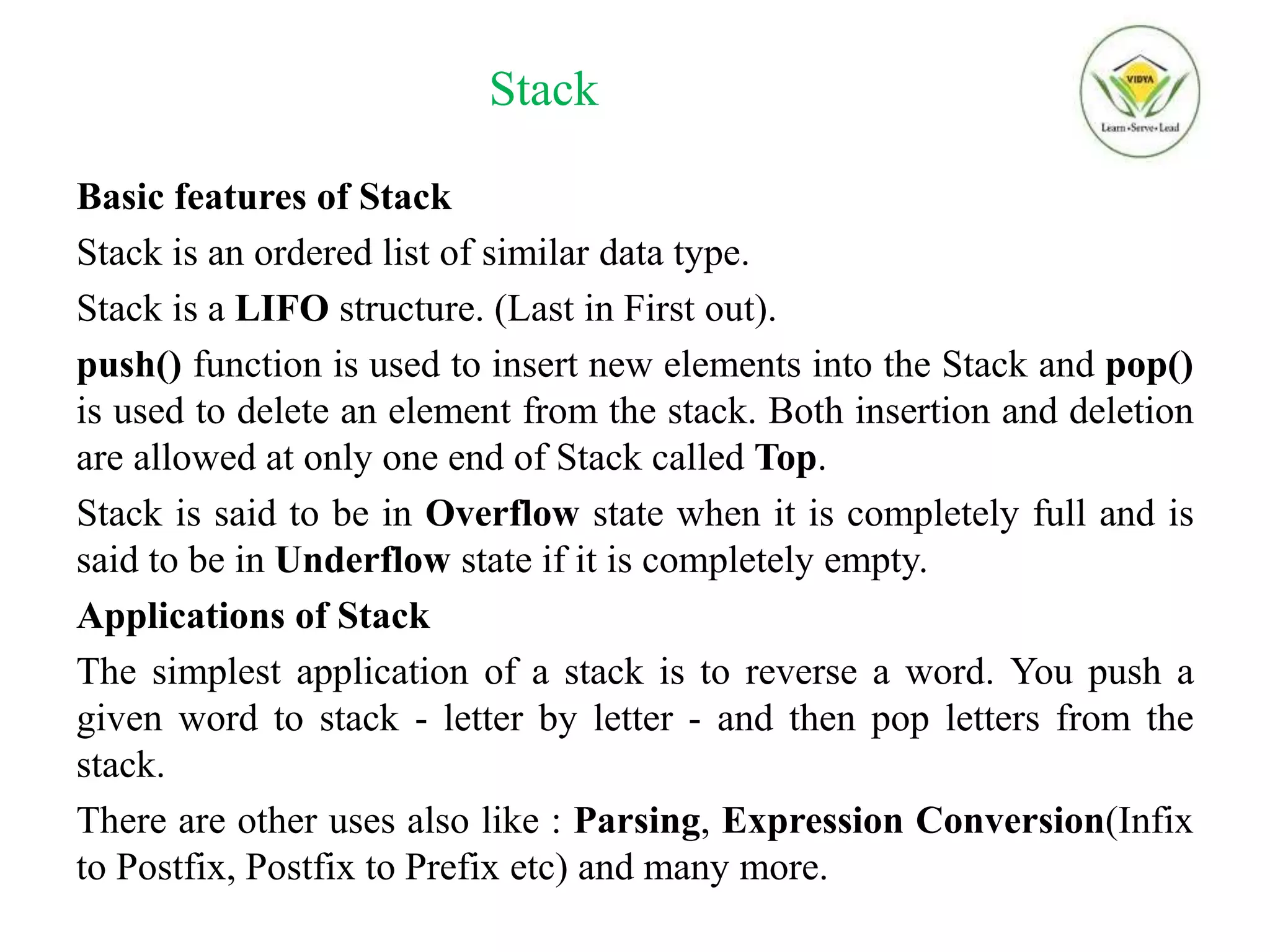
![Stack Operation
Algorithm for Stacks:
Push operation.
If(TOS= Maxsize-1)
Then print Insertion is not possible
Else
Set TOS=TOS+1
Set S[Tos]=data
Exit
Pop Operation.
If (TOS==-1)
Then print deletion is not possible
Else
Data=S[TOS]
Set TOS=TOS-1
Exit](https://image.slidesharecdn.com/arvinddtastructure-200210083349/75/data-structure-5-2048.jpg)
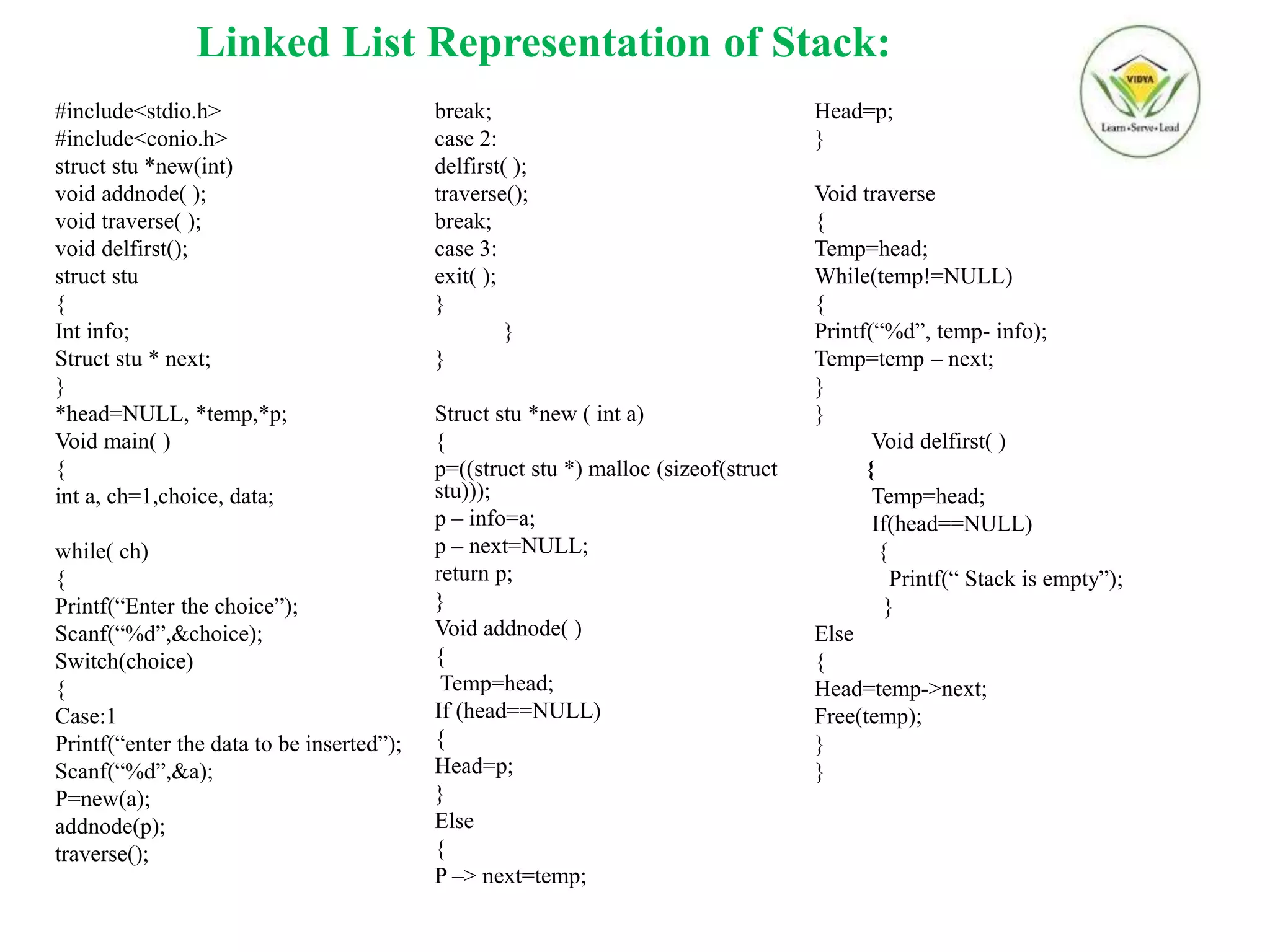
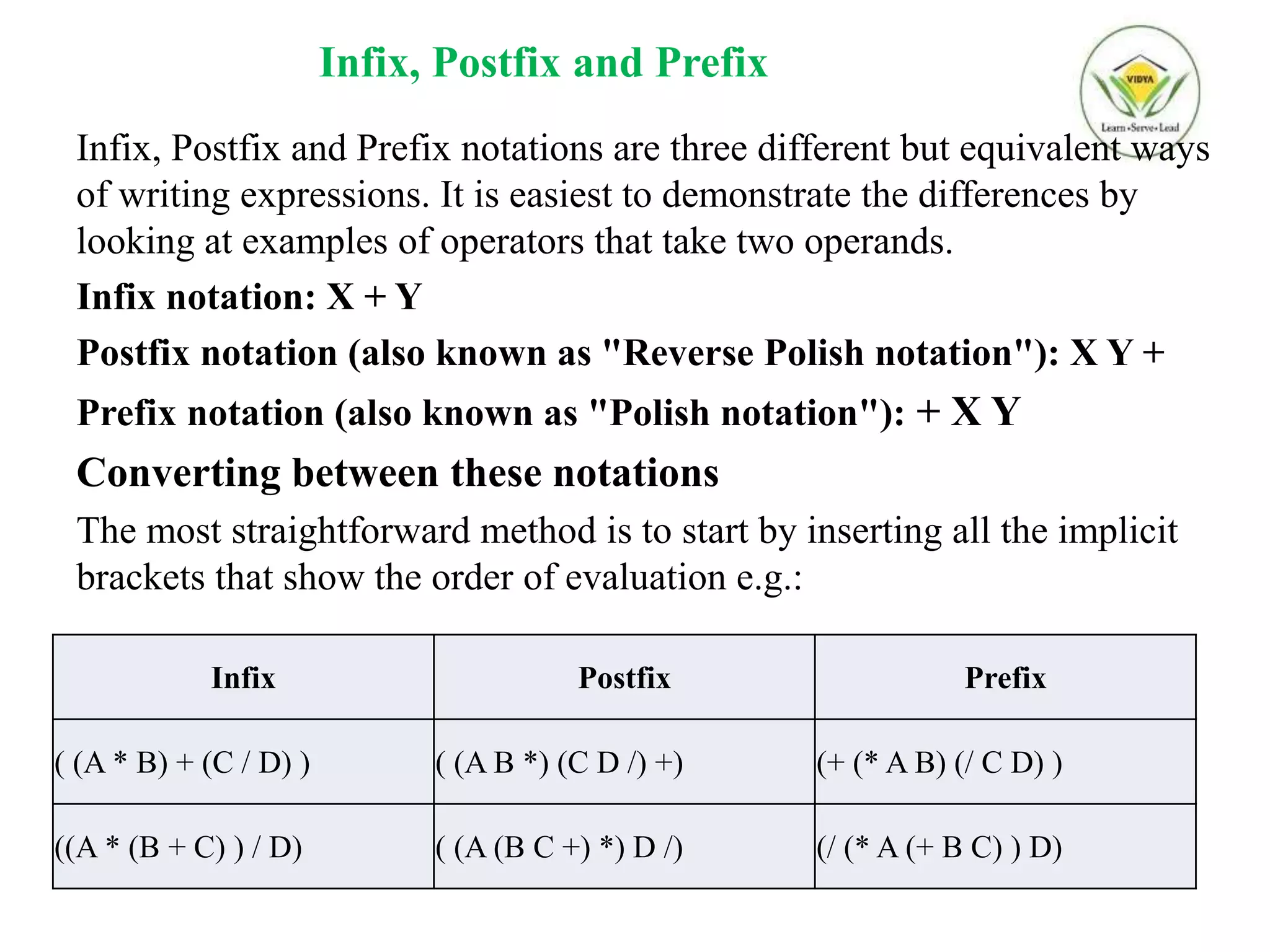
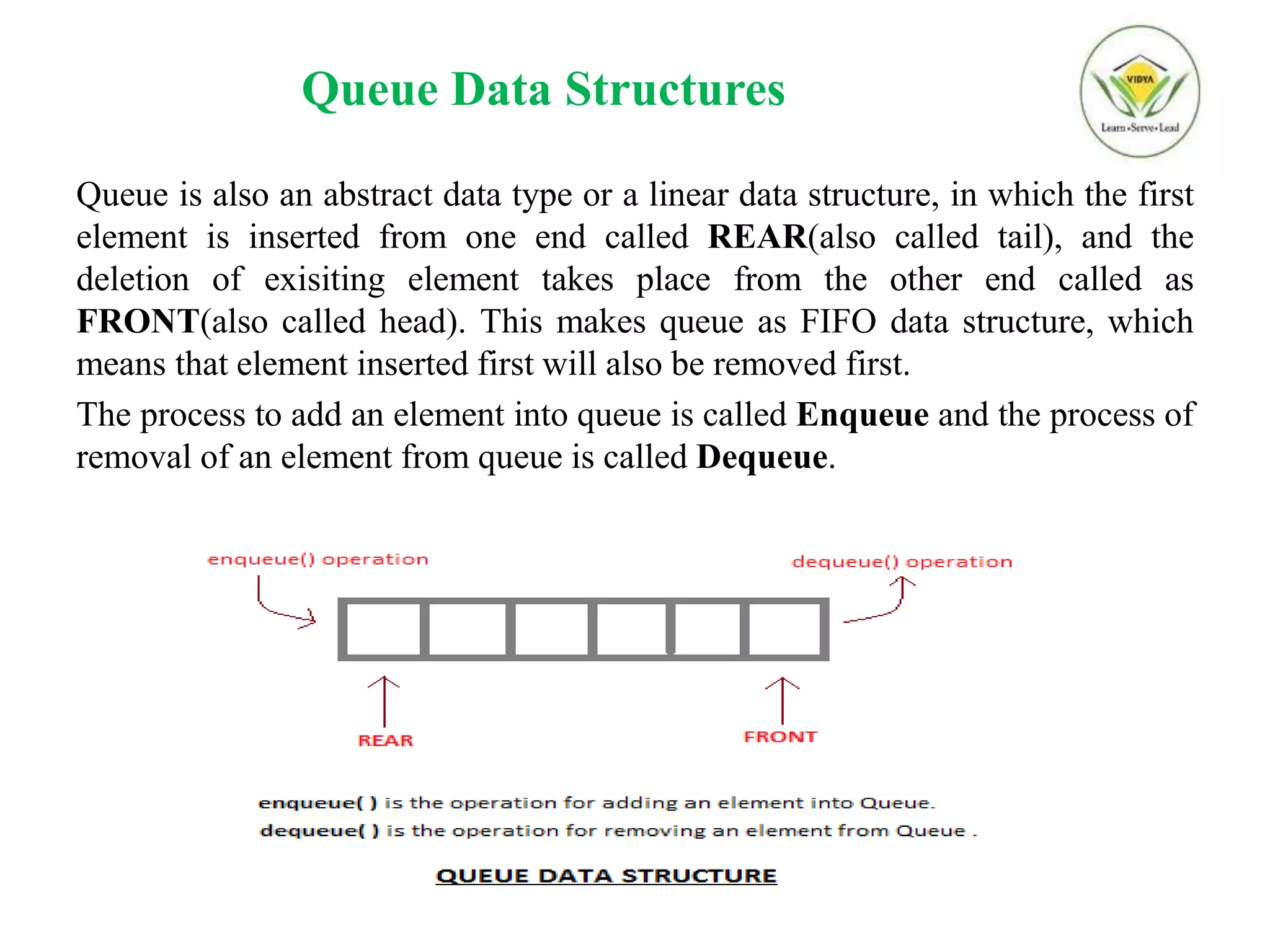
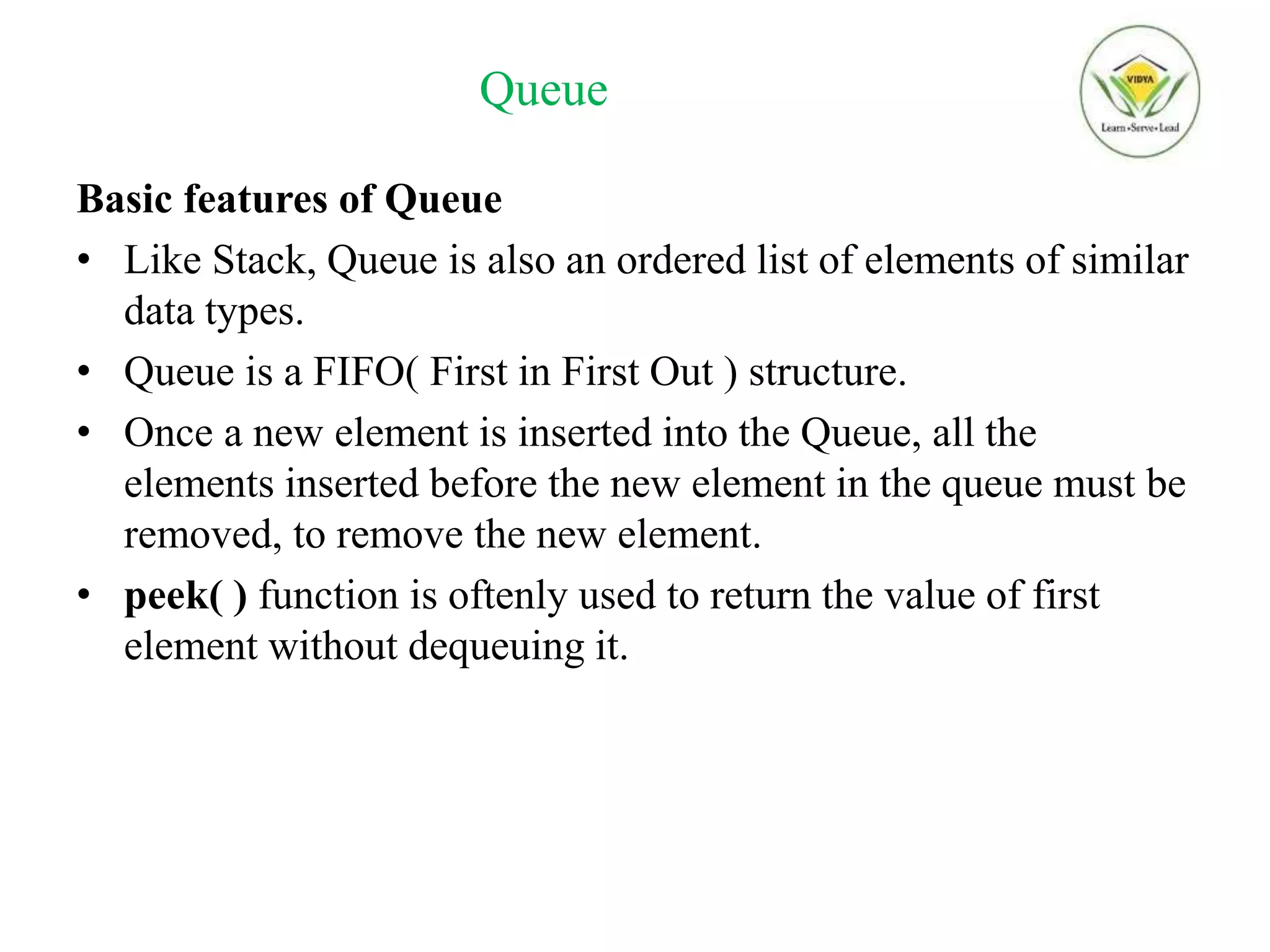
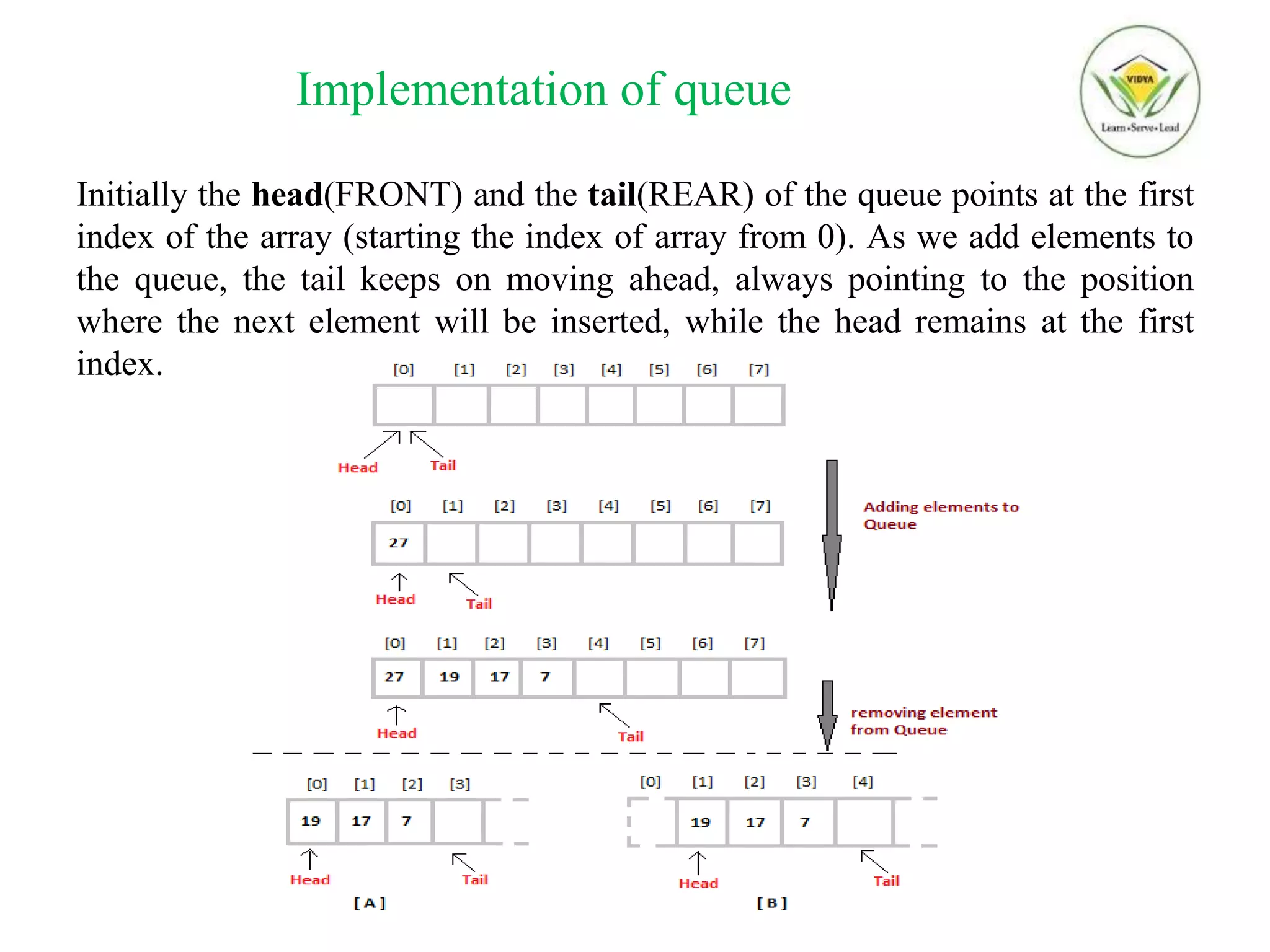
![Queue
Queue is a linear data structure in which insertion and deletion is performed at two ends:
Rear end: Insertion takes place
Front end: Deletion takes place
Algorithms for Queue:
Insertion:
If ( front=0 && rear=size-1)
Then print insertion not possible
Elseif ( rear=-1 && front=-1)
Then set rear=0 and front=0
Else
Set rear=rear+1
Set Q[rear]=data
Exit
Deletion:
If(front=-1 or front>rear)
Then print deletion not possible
Set data=Q[font];
Front=front+1
Exit](https://image.slidesharecdn.com/arvinddtastructure-200210083349/75/data-structure-11-2048.jpg)
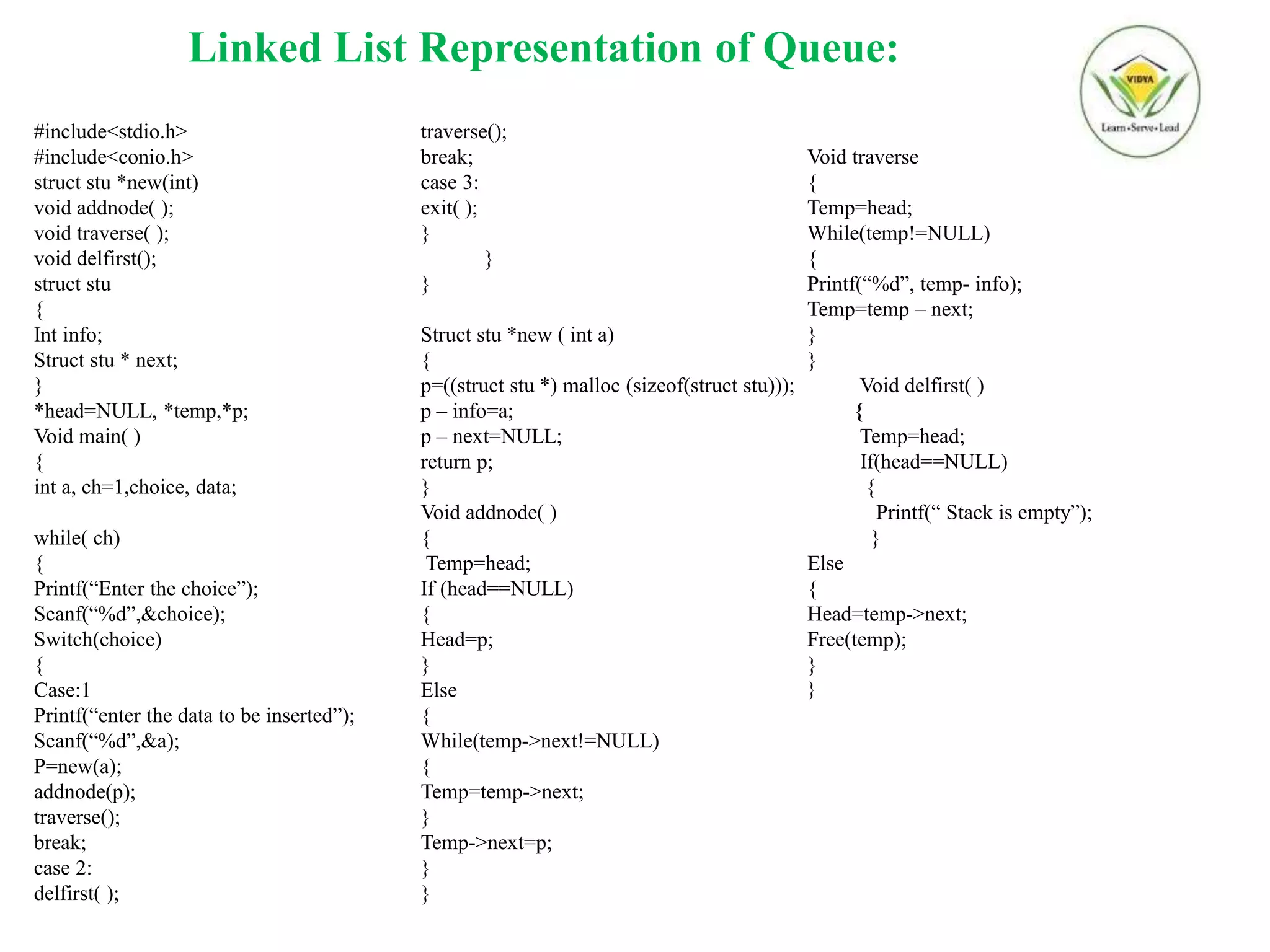
![Circular Queue
when the queue becomes full or rear=maxsize-1, then no more data can be inserted.But, if there is space at the
front end after deleting the elements, then the space can be utilized using circular queues
In circular queue, the first index comes after the right index
Operations on Queues:
Insertion
If front=0 and rear=maxsize-1
Then print insertion not possible
Else if front=-1 and rear=-1
Then set front=0 and rear=0
Else if front!=0 and rear=maxsize-1
Then set rear=0
Else set rear=rear+1
Set Q[rear]=data
Exit
Deletion
If front=-1
Then print deletion not possible
Set data=Q[front];
If front=rear
Then set front =front+1
Else if front=maxsize-1
Then set front=0
Else set front=front+1
Exit](https://image.slidesharecdn.com/arvinddtastructure-200210083349/75/data-structure-13-2048.jpg)
![Program on Array Representation of Circular Queue
#include<stdio.h>
#include<conio.h>
int S[10];
int rear=-1,front=-1,size=10;
void insert();
int delete();
void traverse();
void main()
{
int ch=1,choice,data;
while(ch)
{
printf("Enter the choice");
scanf("%d",&choice);
switch(choice)
{
case 1:
printf("Enter the value to be inserted");
scanf("%d",&data);
insert(data);
traverse();
break;
case 2:
data=delete();
printf("The element deleted is %d",data);
traverse();
break;
case 0:
exit();
}
}
}
void insert(int data)
{
if((front==0) && (rear==size-1))
{
printf("Insertion not possible");
}
else if((front==-1)&&(rear==-1))
{
rear=front=0;
}
else if((front!=0) && (rear==size-1))
{
rear=0;
}
else
{
rear=rear+1;
}
S[rear]=data;
}
int delete()
{
int data;
if(front==-1)
{
printf("deletion not possible");
}
data=S[front];
if(front==rear)
{
front=front+1;
}
else if(front==size-1)
{
front=0;
}
else
{
front=front+1;
}
return data;
}
void traverse()
{
int i;
for(i=front;i<=rear;i++)
{
printf("The list is %d",S[i]);
}
}](https://image.slidesharecdn.com/arvinddtastructure-200210083349/75/data-structure-14-2048.jpg)
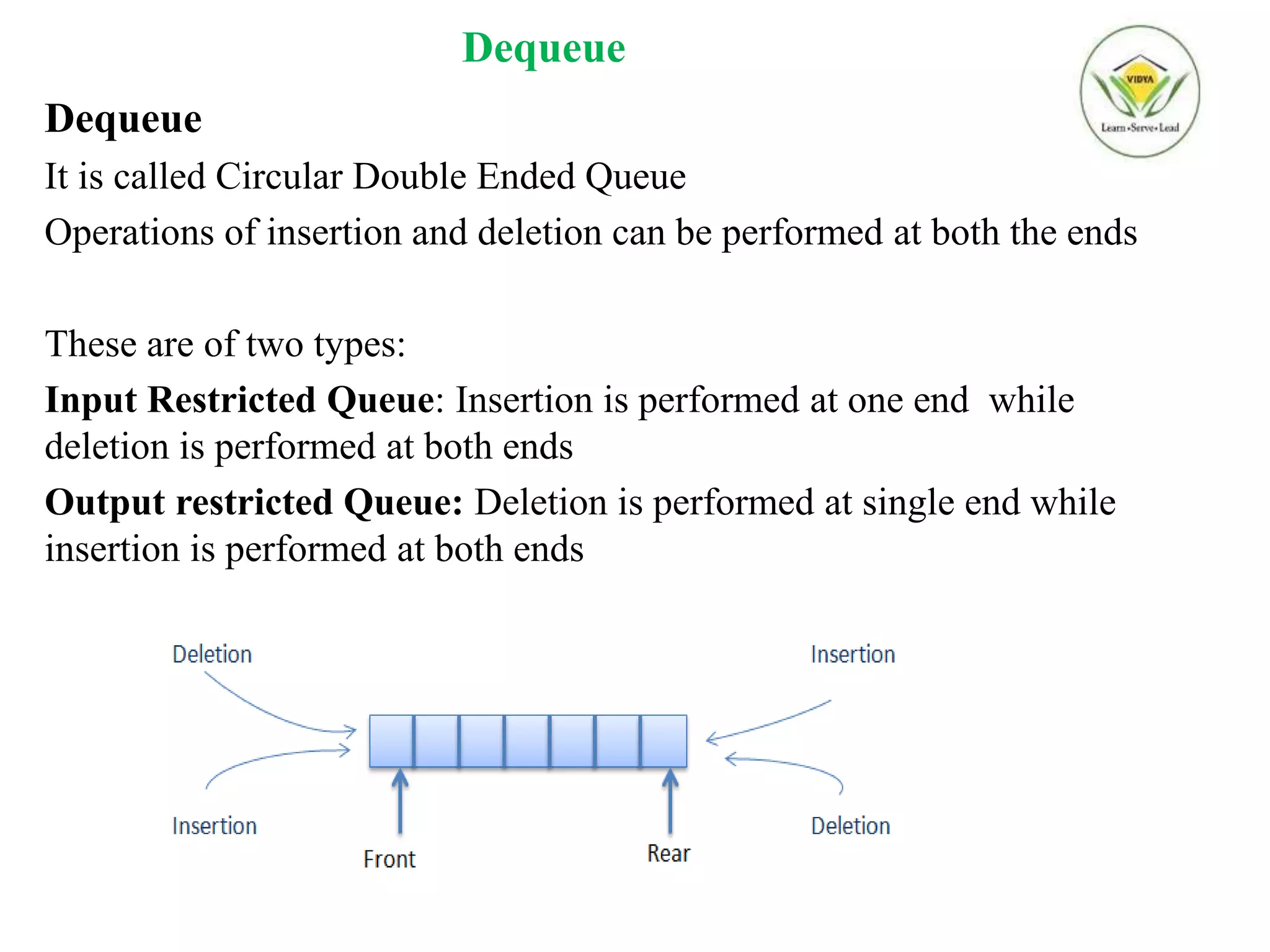
![Algorithm for Deques:
Insert-Right
If front=0 and rear=masize-1 or front=rear+1
Then print insertion not possible
Else if front=-1
Then set front=0 and rear=0
Else if rear=maxsize-1
Then set rear=0
Else
Set rear=rear+1
Q[rear]=data
Exit
Insert-Left
If front =0 and rear=maxsize-1 or left=right+1
Then print insertion not possible
Else If front=-1
Then set front=0 and rear=0
Else if front=0 and rear!=maxsize-1
Then set front=maxsize-1
Else set front=front-1
Set data=Q[front]
Exit
Delete-Right
If right=-1
Then print deletion not possible
Data=Q[front]
If front=rear
Then set front=0 and rear=0
Else set rear=rear-1
Exit
Delete-left
If front= -1
Then print deletion not possible
Data=Q[front]
If front =rear=0
Then set front=-1 and rear=-1
Else
Set front=front +1
Exit](https://image.slidesharecdn.com/arvinddtastructure-200210083349/75/data-structure-16-2048.jpg)
